Ed Hillary stepped up from this land on 11 January 2008, aged 88. This story of him is the most popular of the nzedge.com Legends, (Ernest Rutherford, Katherine Mansfield and Nancy Wake being the next three). People the world over requested contact with Sir Ed through nzedge.com, which was easy to do, such was his modesty and accessibility that his address and phone number was listed in the Auckland phone book. Our condolences to his family and whanau. Many people have written to nzedge.com with messages, tributes and reflections
“In some ways I believe I epitomise the average New Zealander: I have modest abilities, I combine these with a good deal of determination, and I rather like to succeed.” These typically modest words were uttered by the most famous New Zealander of our time – a sporting and adventure hero, who scaled heights and reached places where no human being had gone before.”
Sir Edmund Hillary, Knight of the Order of the Garter, Companion of the Order of New Zealand, Knight Commander of the Order of the British Empire
He conquered Mount Everest and the South Pole and captured the world’s imagination. Yet where others would have been content to admire the view, look down and bask in the sheer individuality of achievement, for Sir Edmund Hillary it was only the beginning of a lifetime of service to others.
To approach writing of Sir Edmund Hillary’s achievements, generosity and the reverential awe in which he was held is, excuse the pun, like looking upwards squinting into the sun while standing at the bottom of a very big mountain. The conjunction of ‘New Zealand’ and ‘legend’ will indelibly be associated with Edmund Hillary in our collective memory. His achievement in climbing Everest was one of the Twentieth Century’s defining moments. In a footstep, Hillary began a journey to become one of its most famous and most interesting people.
In some ways this is unusual, because the real point in mountain-climbing, as in most hard sports, is that it voluntarily tests the human spirit and body against the sternest odds. The heroism of this achievement is mostly focused on the interior; it is of a subjective and private kind. Sometimes ‘winning’ a contest doesn’t even achieve anything more substantial than such satisfaction.
In the thin air of Everest’s peak, Hillary was nagged by an aversion to leaving a job half done. There was the irony of standing on the highest point on the planet with the feeling of a task not yet completed. Hillary said this of his feelings at the top:
“I was very much aware that we still had to get safely back down the mountain again and that was quite an important factor. I really felt the most excitement when we finally got to the bottom of the mountain again and it was all behind us.”
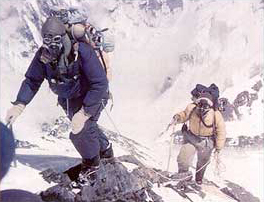
Moving on up. Hillary and Tenzing on the way to final camp on the ascent to Everest. Permission RGS Picture Library
After all, what was remarkable about getting to the top of a mountain? As travel writer Jan Morris (who accompanied the 1953 British expedition as the Times correspondent) writes in Time: 100 People of the Century, “by any rational standards, this was no big deal. Aircraft had long before flown over the summit, and within a few decades literally hundreds of other people from many nations would climb Everest too. […] Geography was not furthered by the achievement, scientific progress was scarcely hastened, and nothing new was discovered. Yet the names of Hillary and Tenzing went instantly into all languages as the names of heroes, partly because they really were men of heroic mold but chiefly because they represented so compellingly the spirit of their time.”
The beekeeper and the Sherpa, one from a remote former colony of the Crown on the edge of the Pacific Ocean, the other from the edge of the heavens. They affirmed the power of humble determination and, placing themselves firmly with the mythic paradigms of their respective cultures, won one for the underdogs. Certainly the act, a coupling of the romantic with the sublime, inspired awe and admiration. Andres Delgardo, attempting the climb in 1997 contemplates the assault on the peak:
“Sometimes in dreams I wonder how Hillary and Tenzing must have felt on that day… stepping on ground that had never been trod upon … all the heights of the planet were below their feet, and above them, nothing but the infinite. That is what I would call a communion with the world and with existence … to transcend, or at least to try.”
What was to become truly heroic about both men though, was the way that they would live with the feat and the fame. For Hillary the accomplishment was not just the celebrity he achieved through being the first to reach the top of a piece of geography (ok – an exceptional piece), but with the way he used his fame to aid the people who had helped him reach Everest: his beloved Sherpas. Morris again:
“It was a measure of the men [Hillary and Tenzing] that over the years they truly grew into the [heroic] condition. Perhaps they thought that just being the first to climb a hill was hardly a qualification for immortality; perhaps they instinctively realised destiny had another place for them. For they became, in the course of time, representatives not merely of their particular nations, but of half of humanity. Astronauts might justly claim that they were envoys of all humanity; Hillary and Tenzing, in a less spectacular way, came to stand for the small nations of the world, the young ones, the tucked away and the up-and-coming.”
Trancsending the projections of celebrity, rising up to stand up for those who cannot spare the time or energy, let alone the money, to mess around in mountains, Hillary devoted half his life, and limitless energy to environmental causes and to humanitarian efforts on behalf of the Nepalese people. From the beekeeper from Tuakau to, as Salon’s Don George describes Hillary’s path, “[t]he man to match his mountain”.
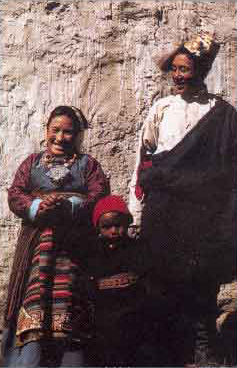
Mingma Tsering, his wife Ang Doule and their child Ang Rita. Mingmar was Sirdar for the Himalayan Trust’s programme of school, hospital and bridge building. From A Pictorial Celebration Sir Edmund Hillary
A Shy Boy
Edmund Percival Hillary was born in Auckland in 1919. His father Percival was a strict disciplinarian who had been wounded at Gallipoli and was described by Edmund as “rigidly principled”: Percival quit his job as editor of the Tuakau District News after disagreeing with the board of directors and then took up his hobby full-time, working as a beekeeper.
The young Edmund went to Auckland Grammar School. It took over two hours each way to get there from Tuakau, so he filled the time by reading. He was younger and smaller than most of his class, and not socially adept, as he said: “I was a shy boy with a deep sense of inferiority that I still have.” (This shyness was to stay with him. In 1953, when he wanted to ask his future wife Louise to marry him, he was so shy that his future mother-in-law asked her on his behalf.)
For someone who would later become known as New Zealand’s most famous adventurer, he felt surprisingly inferior at sport as well as awkward and uncoordinated. He took refuge in reading and dreamed of a life filled with adventure. Recalling in an interview, Hillary said “There was a phase when I was the fastest gun in the west, then another when I explored the Antarctic. I would walk for hours with my mind drifting to all these things.”
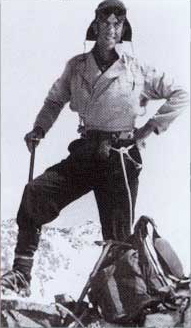
Hillary on the summit of Mount Seally in the Southern Alps NZ 1947. From A Pictorial Celebration Sir Edmund Hillary
Discovering the Heights
It was when he was sixteen, during a school trip to Mount Ruapehu, that his interest in mountaineering begain. He was fascinated by the snow which, as a born and bred Aucklander, he had never seen before. He was also discovering that, while he was not a natural athlete, his gangly, taut frame was physically strong and had higher levels of endurance than many of the friends he went tramping with.
By World War II, Hillary, who had followed in his father’s footsteps as a beekeeper, was seriously involved in climbing. He served in the New Zealand Air Force for two years as a navigator, but was discharged after an accident. By this stage a dream had also been born. As Grayland relates:
“Some day I’m going to climb Everest’, he had told a friend just before the war. He meant it though no one believed it then. After his discharge from the Air Force he joined the Auckland section of the New Zealand Alpine Club, taking part in the first ascent of the southern ridge of Mount Cook and several other high climbs in the Southern Alps.”
After the war, Hillary spent as much time as he could preparing for Everest. He climbed the Southern Alps in summer and winter, to practice both rock climbing and ice pick work, and also took up wrestling. In 1951 Hillary made his first trip to the Himalayas and the following year joined a British Everest Committee training team.
Knocking the Bastard Off
“We didn’t know if it was humanly possible to reach the top of Mt. Everest. And even using oxygen as we were, if we did get to the top, we weren’t at all sure whether we wouldn’t drop dead or something of that nature.”
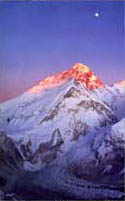 Everest is a very big mountain: It is 29,028 feet high to be exact, but known and revered as Chomolungma to its people. It is a mountain that has – unreachable, fearless, deadly, intangible – defeated 15 previous expeditions. On its slopes many of the world’s strongest climbers had perished. The North Pole had been reached in 1909; the South Pole in 1911. But Everest (often described as the Third Pole), had defied all attempts – reaching the summit had come to seem beyond mere mortals.
Everest is a very big mountain: It is 29,028 feet high to be exact, but known and revered as Chomolungma to its people. It is a mountain that has – unreachable, fearless, deadly, intangible – defeated 15 previous expeditions. On its slopes many of the world’s strongest climbers had perished. The North Pole had been reached in 1909; the South Pole in 1911. But Everest (often described as the Third Pole), had defied all attempts – reaching the summit had come to seem beyond mere mortals.
Hillary joined a British expedition to climb Everest in 1953, led by British mountaineer John Hunt. It was in May, and the expedition was trying to stay ahead of the monsoon snows. Different climbers in the expedition would be chosen to make the assault on Everest. After an earlier pair had to retire 300 feet short of the summit, Hillary and a Nepalese Sherpa, Tenzing Norgay, recognised as the strongest and fittest in the team, were chosen to try the ascent.
After an uncomfortable night, they left the last camp at South Col in the freezing chill dawn of May 29th 1953. Five hours later, at 11:30am, Hillary, who was leading the climb at this point, stepped onto the summit.
“…I then realised that the ridge ahead, instead of still monotonously rising, now dropped sharply away, and far below I could see the North Col and the Rongbuk Glacier. I looked upwards to see a narrow snow ridge running up to a snowy summit. A few more whacks of the ice-axe in the firm snow, and we stood on the top.”

Hillary’s famous photo of Tenzing on the top of the world. Permission RGS Picture Librar
Tenzing stepped up and Hillary took a photograph of him; They stood literally on top of the world. It didn’t enter Hillary’s head to have his photograph taken. “As far as I knew, he [Tenzing] had never taken a photograph before, and the summit of Everest was hardly the place to show him how”.
He looked around for signs of George Mallory and Sandy Irvine, who had gone to the mountain 30 years before and who, some people believe, had reached the summit. He found no sign of them. Tenzing dug holes for food, small gifts to the gods. Having paid their respects to the highest mountain in the world, they then urinated on it.
Hillary heralded the ascent with the laconic style that made him a New Zealand archetype. Returning from the summit, he greeted a fellow New Zealand member of the expedition George Lowe, with the iconic words: “Well George, we’ve knocked the bastard off.”
The photos of Hillary and Tenzing on the top of the world were broadcast across the globe.
From Salon writer Don George, “The photo of Sir Edmund Hillary shows him at the pinnacle – literally – of his career: on the summit of Mount Everest. Sir Edmund – just plain Edmund back then – is 33 years old; his hair is wind-tossed, his craggy, angular face is ruddy and burned by the sun and breeze, and he is wearing a smile as big as the Himalayan sky. Beside him Norgay is smiling just as broadly. They are on top of the world.”
Hillary and Tenzing became instant icons, and the event itself one of the defining moments of the 20th century. Heightening the impact even further was the felicitous coincidence of their arrival just before the coronation of Queen  Elizabeth II, and the dramatic announcement of their triumph on the morning of the coronation. Hillary was knighted, Tenzing was given the George Medal, Britain’s highest civilian award, and the duo were medaled, toasted, and feted around the world.
Elizabeth II, and the dramatic announcement of their triumph on the morning of the coronation. Hillary was knighted, Tenzing was given the George Medal, Britain’s highest civilian award, and the duo were medaled, toasted, and feted around the world.
The image of the tall, imposing New Zealander, catapulted Hillary into the status of media hero, both then and over the intervening half century. Yet he remained modest about the whole event, seeing it as a triumph of a whole mountaineering team, rather than just one man.
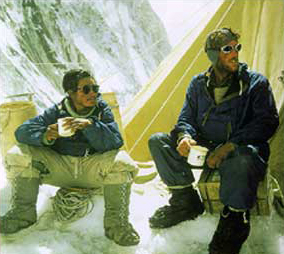
Tenzing and Ed take a tea break on the most important leg – coming down. Permission RGS Picture Library
Part of the myth of Everest is the image of Hillary and Tenzing. They were neither heroes of the old epic kind with a fixation on colossal purposes or prone to colonial utterances such as Mallory’s famous explanation as to why he wanted to climb Everest, “because it is there”. Nor were they larger than life Hollywood media creations. Hillary had reached the highest pinnacle of the earth. This was well before Leonardo DiCaprio would bellow, propped up by stage-hands and harnesses on a cardboard ship sinking to the bottom, “I’m the King of the World” Hillary and Tenzing were quietly, actually, there. Hillary:
“I was just an enthusiastic mountaineer of modest abilities who was willing to work quite hard and had the necessary imagination and determination. I was just an average bloke; it was the media that transformed me into a heroic figure. And try as I did, there was no way to destroy my heroic image. But as I learned through the years, as long as you didn’t believe all that rubbish about yourself, you wouldn’t come to much harm.”
On this lonely planet of freeze-dried food, computer generated fabrics and commercialised mountain climbing, it is almost impossible to imagine the earth-shaking impact that Hillary and Tenzing’s achievement had in 1953. For many it represented the last of the earth’s greatest challenges. It placed Hillary in the lineage of great terrestrial explorers such as Marco Polo, Christopher Columbus, Lewis and Clark, Stanley and Livingston, Perry and Scott and Amundsen, Sir Richard Burton, Ernest Shackleton, Charles Lindbergh – explorers driven to find, step, see, go and endure, where no person had gone before. His achievement came at one of the last times in history when such a feat could still be recognised as a distinctly human one, and not technological. Sir Edmund, writing in 1958, remarked,
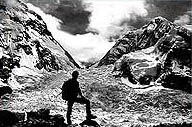
“The explorers of the past were great men and we should honour them. But let us not forget that their spirit lives on. It is still not hard to find a man who will adventure for the sake of a dream or one who will search, for the pleasure of searching, not for what he may find.”
Climbing Everest could have been the pinnacle of his career, but Hillary had a lifetime ahead of him. He continued to go on expeditions, always breaking new ground. In 1958, following in the footsteps of Scott, he led an expedition riding tractors across Antarctica to the South Pole. In the ‘50s and ‘60s he undertook another half dozen Himalayan ascents; in 1960 he embarked on a much-publicised expedition to find the Abominable Snowman; and in 1977 he journeyed by jet boat to the source of the Ganges.
A Lifetime of Service: The Most Impressive of Achievements
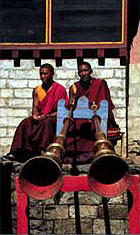 Hillary was never the sort to accept the profession of full-time celebrity. He had higher ideals than that. His travels in Nepal and his friendship with Tenzing had given him a deep appreciation of the Nepalese culture and people, but not so that he was blinded by the romantic beauty of the landscape to overlook the very real social problems that Nepalese people faced; living in a small and poor country dwarfed by two huge neighbours.
Hillary was never the sort to accept the profession of full-time celebrity. He had higher ideals than that. His travels in Nepal and his friendship with Tenzing had given him a deep appreciation of the Nepalese culture and people, but not so that he was blinded by the romantic beauty of the landscape to overlook the very real social problems that Nepalese people faced; living in a small and poor country dwarfed by two huge neighbours.
Hillary recalled how an elderly Sherpa from Khumjung village, the hometown of most of the Sherpas on his Everest ascent, had come to him a few years after that expedition and said, “Our children lack education. They are not prepared for the future. What we need more than anything is a school in Khumjung.”
What the Nepalese needed was practical help and the ability to help themselves improve their standards of education and health. Hillary established the Himalayan Trust, and in 1961 a three room school-house was built in Khumjung with funds raised by the tireless mountaineer. Throughout the 1960’s Hillary’s commitment to Nepal broadened as he returned there to help the Nepalese build clinics, hospitals and more schools. Over the next four decades, he worked to raise the funds and help set up over 30 schools, two hospitals and 12 medical clinics. He also raised the funds to build two airstrips in Nepal to make it easier to bring in supplies.
“I have never felt sorry for the Sherpas , and I have never tried to impose projects on them. These are all things that the local people wanted, and we just responded. Every time we finish one project we get more requests.”

Hillary’s fame was the ticket to fundraising and, into his ninth decade, he spent more than half the year travelling the world, raising money for the trust and supervising the various projects undertaken with the funds he raised. It is largely thanks to Hillary’s persevering efforts that the Sherpa’s existence has been made better known to the world.
One of the less fortunate by-products of the new airstrips was that Nepal became more accessible to mountaineering parties and tourists. The truism that ‘modern life is rubbish‘ is brought home by the garbage that accumulated on the slopes of Everest over the last few decades. Hillary became concerned at the damage to the environment and campaigned to control the amount of tourism and the extent to which it affected Sherpa life and culture. He was concerned that money had become an important part of Sherpa culture in the half century since his ascent, yet realistic about the need to find sustainable ways of helping the people survive. His faith in their endurance and the closeness of the relationship that Hillary developed with the Sherpa people led him to admire their strength, enthusiasm and their sense of humour.
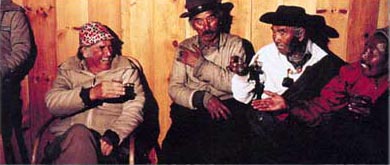
The Nepalese call him Burra-sahib, meaning ‘big in stature, big in heart’. From A Pictorial Celebration Sir Edmund Hillary
“I think that the tourism is a very big economic benefit to the Sherpa people and also they have very strong ties to their own social attitudes and their own religion, so fortunately they’re not too influenced by many of our western attitudes … they have a very strong culture and very strong village spirit. They work together on projects and so on and much of this is very admirable.”
Nepal was also the site of the greatest tragedy of Hillary’s life. His wife Louise, who was a strong supporter of his work in Nepal, and their 16 year old daughter Belinda were travelling to Paphlu, Nepal, in a small plane, when it crashed on taking off. Both were killed.
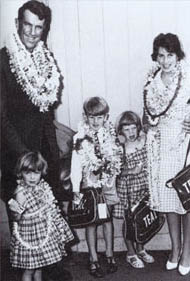
Edmund and Louise Hillary with their children (left to right) Belinda, Peter and Sarah, Honlulu, 1962. Permission of the Alexander Turnbull Library, National Library of New Zealand, Te Puna Matauranga o Aotearoa, must be obtained before any re-use of this image
Hillary blamed himself for persuading Louise to take the light aircraft trip and was a long time recovering from the anguish and guilt. The Nepalese built an altar to Louise and Belinda in the cookhouse at Paphlu, decked with ceremonial scarves and lamps. As Hillary said of the altars:
“I could hardly bear to look at them… In the evenings I walked alone on the airfield with great mountains behind and tears running down my cheeks.”
The only solace at this time was work. He soldiered stoically on in Nepal, fundraising and adding practical assistance, refusing to give in to despair. In 1985, he was appointed by David Lange’s Labour government as High Commissioner to India and Nepal and served in that role for the next four years. In recent years, the trust has expanded its scope, devoting considerable funds to rebuilding monasteries and to reforesting valleys and slopes in the Mustang, Khumbu and Pokhara regions. That ‘Ed’, as he liked to be called, universally evoked love, admiration and respect, is not surprising given the humility with which he approached life,
“I don’t know if I particularly want to be remembered for anything. I have enjoyed great satisfaction from my climb of Everest and my trips to the poles. But there’s no doubt, either, that my most worthwhile things have been the building of schools and medical clinics. That has given me more satisfaction than a footprint on a mountain,”
The Most Famous New Zealander of Our Time
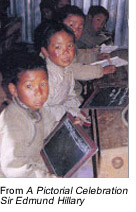 Once in his eighties, Hillary was no longer an active mountaineer, but remained a tireless fundraiser and worker for education and health projects in Nepal. He was widely honoured in New Zealand and around the world, and was the only living New Zealander to be featured on a bank note. He got remarried to June Mulgrew, a lifetime friend, who assisted him in his efforts. His son Peter has followed in his father’s footsteps, having climbed Everest twice himself, and amongst other adventures, visited the North Pole with astronaut Neil Armstrong and climbed Mt Vinson, Antarctica’s highest peak.
Once in his eighties, Hillary was no longer an active mountaineer, but remained a tireless fundraiser and worker for education and health projects in Nepal. He was widely honoured in New Zealand and around the world, and was the only living New Zealander to be featured on a bank note. He got remarried to June Mulgrew, a lifetime friend, who assisted him in his efforts. His son Peter has followed in his father’s footsteps, having climbed Everest twice himself, and amongst other adventures, visited the North Pole with astronaut Neil Armstrong and climbed Mt Vinson, Antarctica’s highest peak.
Sir Edmund Hillary has been the subject of a major Television New Zealand documentary, several books and is consistently lauded in the world’s media. He was known as a “living legend” and ‘the ‘world’s greatest living explorer’, he inspired awe among other mountaineers. As Jon Krakauer, the author of “Into Thin Air” (the account of the 1996 Everest tragedy where New Zealand mountaineering guide Rob Hall was killed trying to save a client’s life), said: “Quite simple, Edmund Hillary shaped the course of my life.”
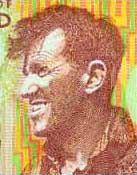
Hillary on the New Zealand five dollar bill
Hillary’s near-mythical status put him on a plateau above other sporting heroes, for he distinguished himself well beyond the singularity of a mountain. From a feat that would have been the crowning achievement of many careers, he went on to become a humanitarian, an ambassador and elder statesman, never giving up, never giving in to either despair or complacency and always planning the next goal.
“… while standing on top of Everest, I looked across the valley, towards the other great peak, Makalu, and mentally worked out a route about how it could be climbed… it showed me that, even though I was standing on top of the world, it wasn’t the end of everything for me, by any means. I was still looking beyond to other interesting challenges.” – From the foreword to Peak Performance by Clive Gibson, Mike Pratt, Kevin Roberts and Ed Weymes.
In the last couple of decades, a British team has attempted to substantiate the claim that George Mallory got to Everest first. A TV documentary crew went up the mountain attempting to recover Mallory’s body and, unsuccessfully, his camera. Whatever the veracity, Hillary’s response was that climbing to the top of a mountain was only half the job – next you have to get back down. Hillary is rumoured to have said on his descent:
“Wouldn’t Mallory be pleased if he knew about this.”
Hillary was someone who did the virtually impossible, climbed the world’s highest mountain, and then did the nearly impossible again refusing, as Don George writes, “to be spoiled by all the adulation and accolades that the achievement earned him, and remaining loyal to an ideal and a people he loved. Because of this man, countless lives have been bettered, and an entire culture has been preserved.”
Many ‘heroic’ deeds in the most narrow definition of the term, consist of an act of adrenaline-filled expression, a singular moment of exhalation. Conversely Hillary’s brand of heroism is the heroism of inspiration, “of debts repaid and causes sustained”. Inextricably attached to the hill in our memories is, as Jan Morris muses, a gracious reputation built on “decency, kindness and a stylish simplicity.” The real story of Hillary and the meaning of Everest is in the life not the moment. So when the world’s press remembers May 29th every year as the day that Hillary and Tenzing conquered Everest, they should not be remembering a feat but an example.
It is an example set in a world where you often wonder if we have lost our capacity for awe and wonder. ‘Ed from the edge’, despite having climbed to the heavens, was never religious, but had some sympathy for the Buddhist teachings of his Tibetan friends, especially the tenet that one should choose their own path in life.
“It is not the mountain we conquer but ourselves”
Sir Edmund Hillary: from King of the World, to humble citizen.
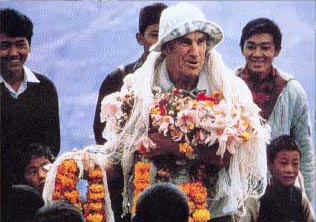
From A Pictorial Celebration Sir Edmund Hillary
References:
Web Sources:
[Accessed June 2000]
From The Mountain Zone: “Legends of modern climbing history”
http://classic.ountainzone.com/climbing/himalayan
From the Salon writer Don George’s excellent article, “The man to match his mountain,” in the ‘Brilliant Careers’ series
http://www.salon.com/bc/1998/12/cov_01bc.html
From the American Academy of Achievement
http://www.achievement.org/autodoc/page/hil0pro-1
The Time: 100 Most Important People of the Century issue:
http://www.time.com/time/time100/heroes/profile/hillary_norgay01.html
From Forbes, “New peaks to climb”, by James M. Clash:
http://www.forbes.com/forbesglobal/00/0110/0301054a.htm
From the Environmental News Network, “Sir Edmund speaks out”:
http://www.enn.com/today.html?id=8204
From the Sydney Morning Herald: “Clear view from the top”:
http://www.smh.com.au/news/9908/11/features/features5.html
From the Sydney Morning Herald: “Crowd climbs to see Everest victor”:
http://www.smh.com.au/news/9908/17/national/national6.html
From the Celebrity Atheists site:
http://www.celebatheists.com/index.php?title=Sir_Edmund_Hillary
Book References:
A selection from the many books written on Hillary and Everest.
Hillary, Sir Edmund. (2000) View From the Summit, Pocket Books, 2000
http://www.amazon.com/exec/obidos/ASIN/0743400674/o/qid=959897764/sr=2-1/002-3648731-7516063

Hillary, Sir Edmund and Fisher, James M. (1990) Sherpas: reflections on change in Himalayan Nepal, University of California Press, USA.
McLauchlan, Gordon (Editor). (1984) The Bateman New Zealand Encyclopedia, David Bateman Ltd, Auckland.
Hillary, Sir Edmund. (1975) Nothing Venture, Nothing Win.
Grayland, Eugene. (1967) Famous New Zealanders, Whitcombe and Tombs Limited, Auckland.
Sir Edmund’s early exploits are recounted in High Adventure (1955),The Crossing of Antarctica (1958), and No Latitude for Error (1961).
Newspaper and Magazine Articles:
Herrick, Stefan. (1999), “A mountain of a man”, Evening Post, July 17.
Norquay, Kevin. (1999) “Everest conquest ‘top news story of century’”, The Dominion, December 27
(1998) “Standing ovation at Smithsonian for Hillary”, The Dominion, November 18.
Samson, Alan. (1999) “Tributes flow as Sir Ed turns 80”, The Dominion, July 21.Calder, Peter. (1997) “Sir Edmund’s slow steps to recovery”, The Herald, March 14.
Philp, Matt. (1997) “Tracking Ed”, The Listener, April 26.
Sanders, Andrew (1996) “Ed Hillary rated the greatest Kiwi sportsperson of all time”, Sunday Times, July 28.
Vincent, Rosemary (1985) “Humour, tragedy colour the life of Sir Edmund Hillary”, The New Zealand Times, January 6.










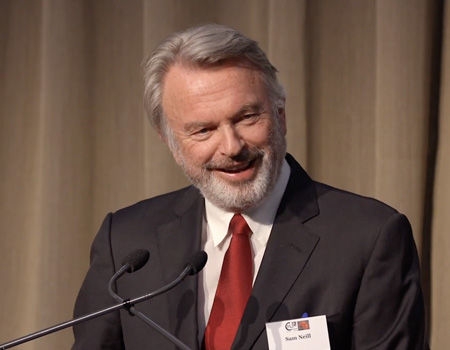


So many achievements have been done on Earth in the name of scientific discoveries,mission to mars and moon as well as so many challenges that can shake us well but whenever I read about Mt. Everest and these two men's feat,I don't remember how many times I bow my head to them.
Hello and greetings from another part of the globe. I just made a very short video about a remarkable correspondence between the lifetime of Sir Edmund and the height of Mount Everest. (It's a bit like Bobby Fischer dying at the age of 64 and there being 64 squares on the chess board.) http://www.youtube.com/watch?v=WdZH6LMH3Rk VV Iceland
I'm a kiwi living in London, and following on from what I hear at home, I have set up a tribute page on facebook.com which I am hoping to get many people commenting on. What I would ultimately like to do is pass this on to the Sir Ed's family to add to the many millions of people who no doubt have already passed on condolences. It is important that we all recognise the scale of impact the man had on not only New Zealanders (not overtly, but I believe he was the pioneer of the kiwi OE!) but others around the world as well. The direct link is: http://www.facebook.com/group.php?gid=8880296999&ref=mf If you can help with ideas on who to contact to pass this through to Sir Ed's family or any representatives then that would be great. contact@nzedge.com Simon Great Britain
I have known the Hillary family for over 40 years as my father John O'Keefe was commissioned to sculpture Sir Ed's bust when I was only 6 or 7 years old. The reason for this text is to offer condolences to the Hillary family on their loss of Sir Ed, a fine man and a fine father-figure of a man. I will never ever forget, may God be with you Sir Ed. Roger Champion Bay, Australia
I would like to establish contact with Sir Edmund Hillary as I was born on the 29th May 1953 the day Mount Everest was conquered. I am truly inspired by what Sir Edmund, a very humble and noble soul and yet an icon in his own right has done for the upliftment of the Sherpas in Nepal. It is my dream to write/speak/ travel out to New Zealand to meet my hero. Yuvraj South Africa
Hello my name is Mrs Macrae and I teach at Weymouth intermediate school. Thanks to this website my children have learnt a lot about Sir Edmund Hillary. Mrs Macrae, Teacher
I'm doing a school project about Everest and your article about Sir Edmund Hillary was really helpful and interesting. I had no idea how much he did besides climbing! Student Denever, USA
My first mental images of New Zealand were the mountains climbed by Sir Edmund Hillary there before he stood triumphant at the top of the world on May 29, 1953! Your Mount Cook created a desire to see the world from the very top. At 29,035 feet, Everest, Sir Edmund and New Zealand had the world's attention. And just look at his achievements since that day in May! And New Zealand's in just five decades! Your mountains, your fiords, your art and culture, your rugby and literature are distinctly and uniquely New Zealand! When in Paris, Stuttgart and Innsbruck in recent years, I became very much aware of how young the United States is actually. We have that in common with New Zealand. Each time I decorate a salad with Kiwifruit, I think of your snow-capped mountains and Sir Edmund Hillary. In this area, the kiwi on top of a salad is a distinctive cultural statement at all events. New Zealanders yachting and sailing, your rugby, your art and literature, your spirit, your spectacular scenery, your Maori, your excellent blend of Polynesian and European cultures. Do not sell yourselves short! You have my admiration and support in all you are doing to raise New Zealanders awareness of their distinctive and unique land and what it means to be a New Zealander -- a special and strong identity. I wish you only the best of luck in uniting the mountains, the fiords, and all that is New Zealand to arrive at the self-realization that it is good to be a New Zealander. I found myself wanting to become a part of your newest activities in strengthening your national identity. Best regards to all and congratulations to one of your finest citizens on the recent celebration of the Conquest of Mount Everest High in the Thin, Cold Air on that historic day in May. A wonderful adventurer and humanitarian. A world and New Zealand citizen. Top of the Mountain to all New Zealand! Your success is assured by your fine efforts to realize a new envisioned destiny with an eye to your past heritage. Activist Arlington, USA
I loved your biography on Sir Edmund Hillary. p.s. I walked in the Everest region for three weeks 25 years ago and it was the time of my life. Attorney USA
What a terrific article about Sir Edmund Hillary! My husband, Kevin Neal, is currently climbing Mount Everest for the first time. He is a dentist in Ponte Vedra Beach, Florida. We started a website to track his progress three weeks before he left on March 22, 2003. He is raising money for charities for every foot he climbs. I would love to get in touch with Edmund Hillary. Can you provide me with a way to contact him? I think it would be terrific to have him talk to Kevin, sign a note in his book (we have an autographed copy), and/or something to that effect. Kevin's team plans a summit bid May 15, 2003. His website is www.charityeverest.com. Thank you for your assistance!! Sincerely, Janet Neal. Janet Neal
I am currently working with film stars, Robert Redford, Cameron Diaz and Leonardo DiCaprio at Natural Resources Defense Council to protect the environment. The President of NRDC is Mr. John Adams. Many of these people are aware of the mountains as our cathedrals, and they seek to protect them as such. Sir Edmund has been a wonderful inspiration to all peoples and has truly become the cathedral. So, our heartfelt thanks to him is in a spirit of true reverence. For all the ideals he represents to so many. Mountain climber, scholar, celebrity, explorer and humanitarian! The world is still in awe!!! Retired Arlington, USA
Thank you for your creating such a wonderful site. I am creating some programs for children and am emphasizing the making of heroes ... courage, perseverance, fear, determination ... rising above personal limitations ... what it takes to go beyond the experience of others ... reaching the impossible ... reaching the dream. The first two are about Captain James Cook and Sir Edmund Hillary. I want my listeners to smell the salt of sea, to hear the moan of the ship, to feel the burn of the ropes through weather roughened hands, to stare into the bitter cold of the mountain, to breathe air so thin they nearly faint ... to know the thrill of reaching the summit ... of finding new lands and new peoples ... of facing risk and arriving against all odds at the destination of their journey ... to feel the fire of determination to try again when defeated. I would like to read some of Sir Hillary's notes or journal entries that might help me with my own journey here ... to know something of the sounds and smells that only he could describe. I would appreciate any suggestions of readings or sources you might have. Sincerely, Susan Fordyce. Writer/Artist/Storyteller Indianapolis, Indiana, USA Ed: The best account would be Hillary's own account of the ascent. In 'View From The Summit' Sir Edmund goes into great detail describing his adventures and achievements ... see the list of references at the foot of the nzedge story: https://www.nzedge.com/heroes/hillary.html.
After seeing Sir Edmund on an automobile commercial I decided to attempt to get a message to Sir Edmund. As a 19 year old kid, and a member of the US Air Force, in January 1956 I flew from Seattle Washington to Anchorage Alaska in the seat next to Sir Edmund, he was on his way to Mt. McKinley, I was on my way to Elmendorf AFB. Sorry to say at the time I was not aware of who he was, but I will never forget it now after learning of some of his accomplishments. I do hope this message will get to him personally. Sincerely, JP Freeman Retired Barboursville, WV, USA
"Hello, I just had the pleasure of reading the excellent piece you have on Sir Edmund Hillary. He has been a hero of mine since I first read about him in the late 1950s. I am no longer the adventure-reading child who could rattle off the names of the twenty tallest peaks in the world, thanks to the interest that Hillary and Tenzing sparked in me. However, my affections for this man have not wavered but only deepened in more recent years. His tireless work in Nepal may not be the stuff that grabs the fancy of every 10 year old, as did his earlier adventures, but these are indeed impressive pursuits, as your article so well described. My heart is lifted to read once again of his tireless gift of self. Thank you!" Julie Kelly, Austin Texas, USA mailto:jfkelly@bbnow.net Austin, Texas, USA